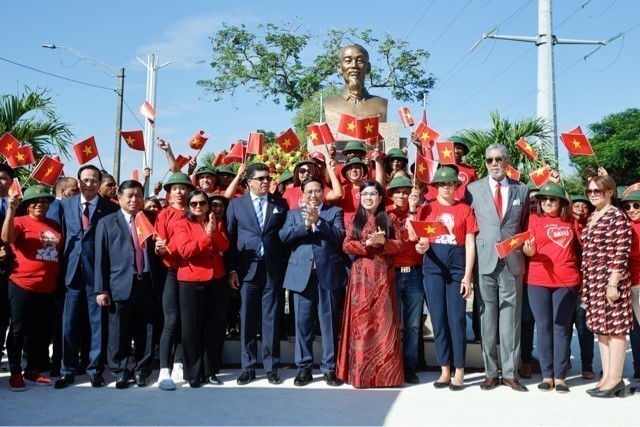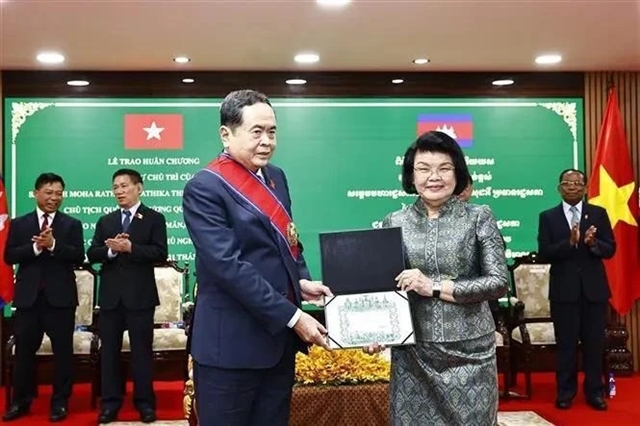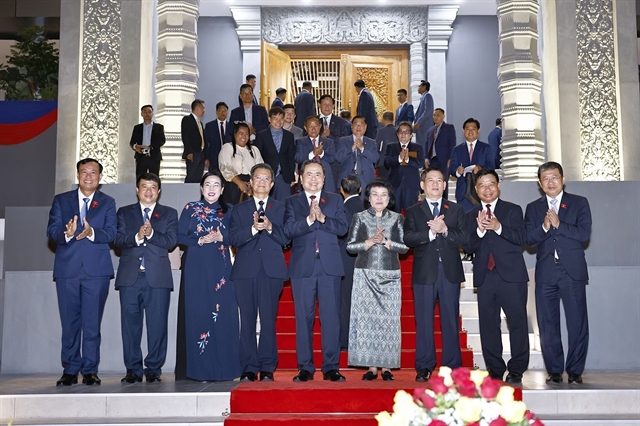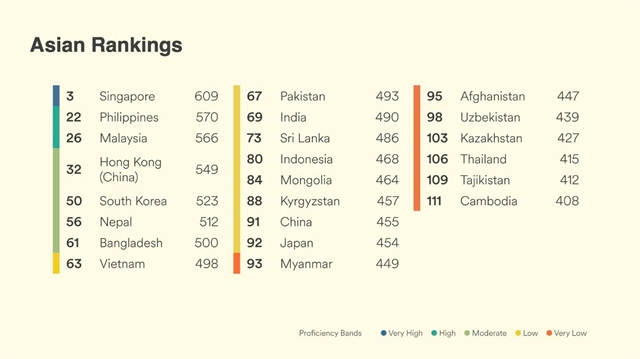 Economy
Economy

The processing and manufacturing industry in Việt Nam has not integrated into the global production network and value chain despite its high growth rate of 14.5 per cent in 2017.
 |
| A mobilephone assembly line at Samsung Electronics Việt Nam. The ministry said it would give support to connect local producers to foreign investment projects in Việt Nam to effectively exploit the integration process. — Photo dantri.com.vn |
HÀ NỘI — The processing and manufacturing industry in Việt Nam has not integrated into the global production network and value chain despite its high growth rate of 14.5 per cent in 2017.
The Ministry of Industry and Trade (MoIT) said the processing and manufacturing industry continued to be the main momentum for the industrial sector.
Last year, its exports rose by 22.4 per cent to US$173.5 billion, accounting for more than 81 per cent of the country’s total export turnover. Of this, the export of mobilephones and spare parts contributed the highest - $45.1 billion, up 31.4 per cent from the previous year. Exports of computers and electronics were worth $25.9 billion, posting a 36.5 per cent year-on-year rise.
However, the ministry said the added value of some sectors were small, such as garments and textile, leather shoes and electronics. The competitiveness of industrial products was limited.
In addition to this, the association among firms in a sector and between sectors has been weak. Many companies failed to take advantages of the available resources of other firms to improve the sector’s productivity.
That is why production costs went higher, wasting resources of the whole sector as well as creating unnecessary competition in the industry, MoIT said.
On the other hand, capital that poured in the industrial sector has been focused on industries with short-time investment refund, such as consumer goods, while the hi-tech industries lack investment.
The ministry said the sector would face difficulties such as high labour cost, the trend of applying automation, protectionism policies from other countries and more fierce competition.
It said imports from big economies, such as the US and European Union, would be reduced while competition from other countries such as Myanmar and Bangladesh would be higher due to lower labour costs.
To attain sustainable development in 2018, the industry should focus on key sectors, including electronics spare parts. The ministry said it would give support to connect local producers to foreign investment projects in Việt Nam to effectively exploit the integration process.
It would enhance implementation of support industry development plans relating to auto, electronics, leather shoes and garments and textile, MoIT said.
MoIT would establish loans with preferential interest rate through commercial banks for the processing and manufacturing sector.
For the mechanics sector, MoIT has asked the finance ministry to submit a revised law on value-added tax on agricultural machines to resolve the disparity between locally produced and imported machines.
In addition to this, the Government will promulgate the strategy for the mechanics sector by 2025 with a vision to 2035 to better support the processing and manufacturing industry. — VNS









